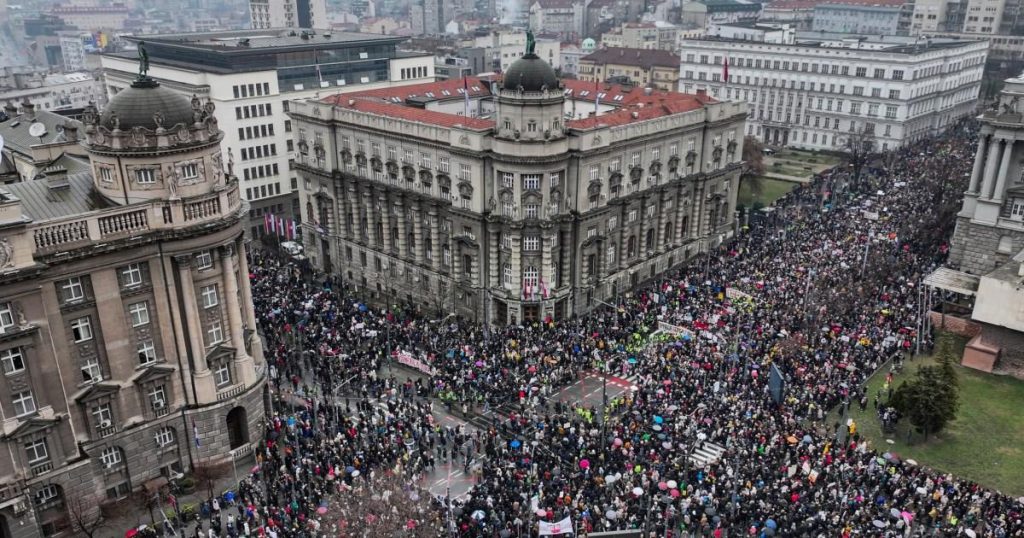The political climate in Serbia reached a boiling point as anti-government protests, spearheaded by students, escalated into violence. A shocking incident captured on video showed a car plowing into a group of student demonstrators in Belgrade, injuring a 26-year-old woman. This act of aggression came amidst a backdrop of growing public dissent against President Aleksandar Vucic’s administration, with accusations of corruption and a demand for accountability fueling the unrest. The protests, marked by daily traffic blockades and widespread participation, represent the most significant challenge to Vucic’s decade-long rule. The incident involving the car ramming protesters mirrors a similar event the previous week, further intensifying the already tense situation.
The student-led demonstrations stem from a tragic train station canopy collapse in November that claimed the lives of 15 people. Public anger has been directed at the government, with critics attributing the disaster to corruption and negligence. The students, taking the lead in demanding accountability, have organized daily traffic blockades to disrupt daily life and bring attention to their cause. Their actions have galvanized a broader movement, drawing tens of thousands of people to demonstrations across the country and effectively shutting down businesses in Belgrade. The protests have become a focal point for expressing deep-seated frustration with Vucic’s leadership and the perceived failings of his government.
The incident where the car rammed into the protesters highlights the volatile nature of the demonstrations and the escalating tensions between protesters and those who support the government. The 24-year-old driver was apprehended by police, but the incident underscores the risks faced by demonstrators who are exercising their right to protest. While the injured woman’s condition remains unknown, the event has further inflamed public sentiment and strengthened the resolve of the protesters. The repeated use of vehicles as weapons against demonstrators suggests a disturbing trend and raises concerns about the safety and security of those participating in the protests.
President Vucic, facing mounting pressure, has responded to the protests by organizing a counter-rally in a central town. This move is seen as an attempt to demonstrate his continued support and project an image of strength in the face of growing opposition. However, the escalating protests suggest that his grip on power may be weakening. The government-controlled media has portrayed the student-led movement as a foreign-backed conspiracy aimed at destabilizing the country, a narrative that resonates with some segments of the population but is widely rejected by the protesters themselves.
Adding to the complexity of the situation are reports of pro-government thugs attacking protesting citizens. These acts of violence, coupled with the government’s rhetoric, further polarize the nation and raise concerns about the potential for further escalation. The accusations of foreign interference, while unsubstantiated, serve to discredit the protesters and deflect attention from the legitimate grievances that fuel the demonstrations. This strategy, while potentially effective in the short term, risks further alienating the public and deepening the existing divisions within Serbian society.
The student protests, now in their second month, have significantly disrupted daily life in Serbia. Universities and schools remain blockaded, symbolizing the students’ unwavering commitment to their cause. The protests have transcended student grievances and become a broader expression of discontent with the status quo. Prominent figures, like actor Goran Susljik, have publicly voiced their support for the student movement, signifying a growing recognition of the need for change. The sustained nature of the protests, coupled with the increasing public support, indicates a potential turning point in Serbian politics. The students, through their actions, have opened a space for dialogue and change, challenging the established power structures and demanding a more accountable and responsive government.




